A Complete Guide to Truffle Hunting in Meteora
Join expert guides and trained truffle...
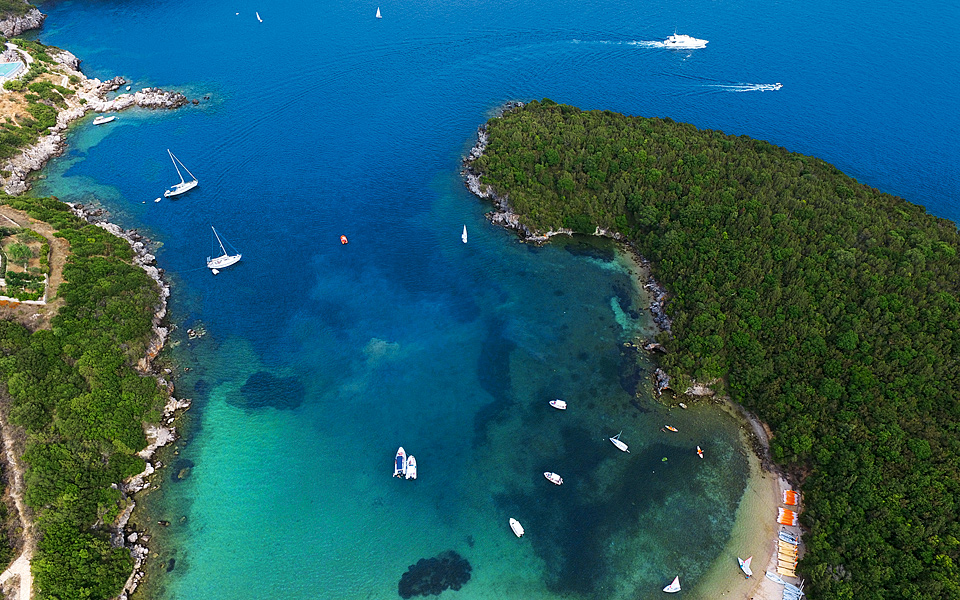
With waters like these, it's no wonder that Syvota is known as the Caribbean of Greece
© Sakis Gioumpasis
Syvota has been promoted as the “Caribbean of Greece” thanks to its enchanting mix of pristine shores, narrow inlets and lush green islands which grace the area, as well as the diverse experiences this destination can offer. Sailboats are available for rent with or without a skipper. The well-known beaches are equally charming. One of the most popular is Bella Vraka on the islet of Mourtemeno, which you can reach by walking across a thin strip of sand. Another is Piscina, a sand and pebble beach on the islet of Aghios Nikolaos. In Syvota itself, there are a number of hotels, restaurants, coffee shops, a marina and a marvelous promenade.
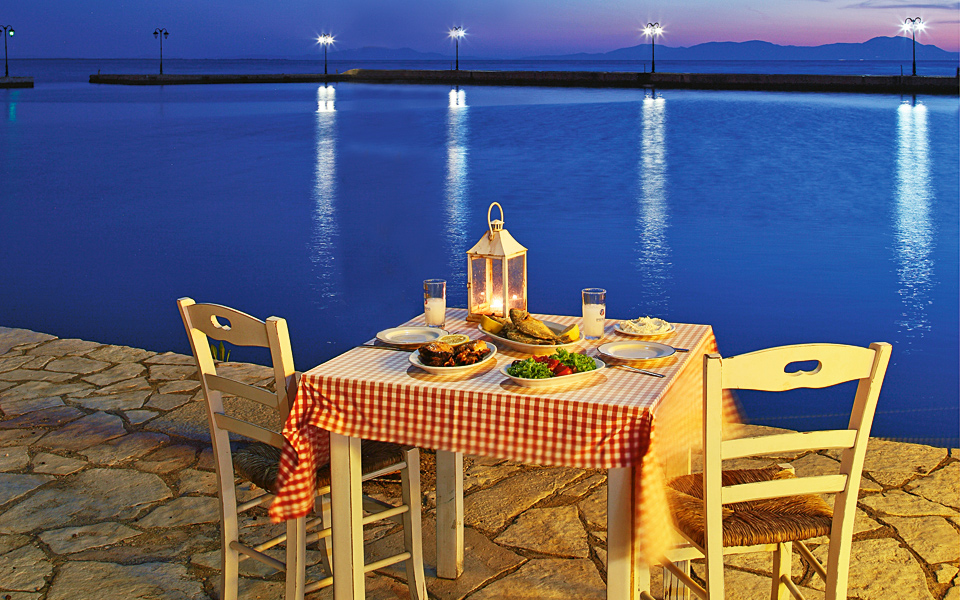
Sagiada is known for its fresh fish
© Olga Charami
(43k | 1 hour from Syvota)
A short promenade, a long beachfront, a spectacular sunset and a view of Corfu await visitors to the fishing village of Sagiada, just 10k from the border with Albania. The beaches of Keramidi and Strovili further north, along with the old settlement with its traditional stone houses, are reason enough to visit Sagiada, but most people will send you here for the delicious food. That’s because the fish served at the tavernas in the tiny harbor are all freshly caught. Not surprising when you consider that at least 50 of the village’s 700 residents are fishermen!
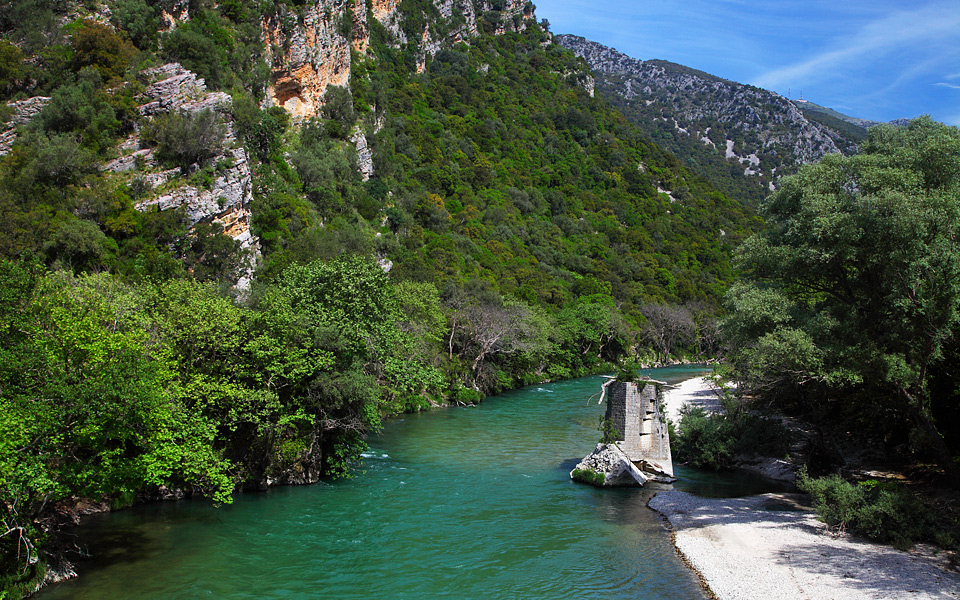
Kalamas is one of the longest rivers in Epirus and its banks are lined with beautiful nature
© Olga Charami
(60k | 1h20m from Syvota)
Running for approximately 115k, the Kalamas is one of the longest rivers in Epirus. It rises near Nemertsika Mountain in the Ioannina region and flows down to the Ionian Sea, forming an impressive delta between Igoumenitsa and Sagiada. Among its most stunning and easily accessible stretches are the area around Stena (i.e., “gorge”) and its estuary. At Stena, there are the ruins of the Boliana Bridge and, on a mountain slope nearby, the Byzantine citadel of Osdina where you can visit the beautiful churches of the Holy Archangels and the Dormition of the Mother of God. At the river delta, the maze of dirt roads can be tricky to navigate, but the beautiful scenery of riverside woodlands and lagoons makes it well worthwhile.
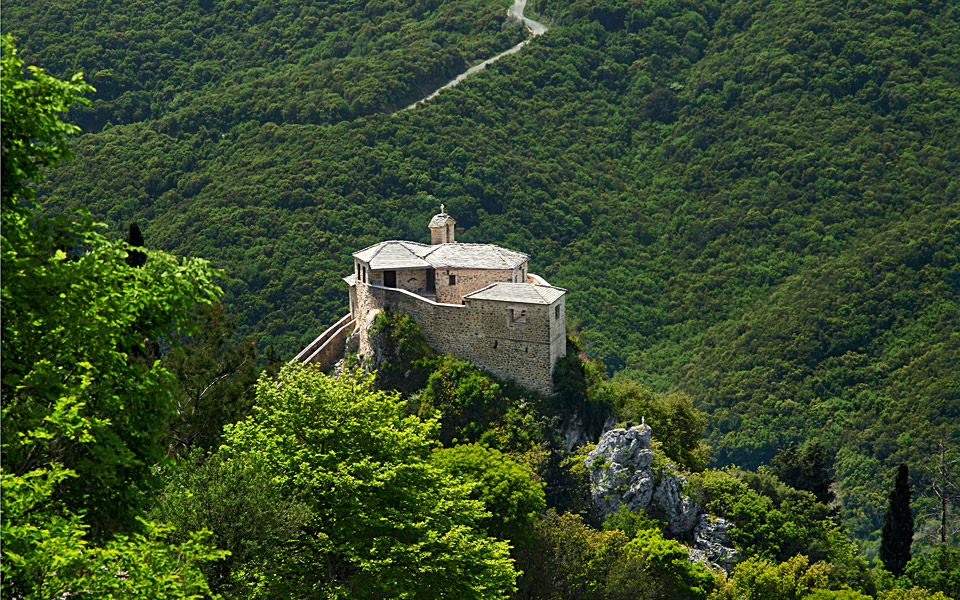
The Monastery of St. Minas at Kokkinolithari is beloved by locals
© Olga Charami
(45-50k | 1h10m from Syvota)
The Monastery of Giromeri, the Monastery of St. Minas at Kokkinolithari and the Hermitage of St. Nilos are noted for their unusual settings and much beloved by the locals. The hermitage is a humble cave dwelling where the saint himself lived for several years; below it, there is a small chapel. This same St. Nilos founded the Monastery of Giromeri in the 14th c. The interior of the Katholikon (main church) is decorated with wall paintings from the 16th and 17th centuries. The Monastery of St. Minas at Kokkinolithari is a dependency of Giromeri. The monastery perches atop a small rock, earning it the nickname “Meteora of Epirus”. The locals can all tell you stories of the miracles they credit to their venerated monastery.
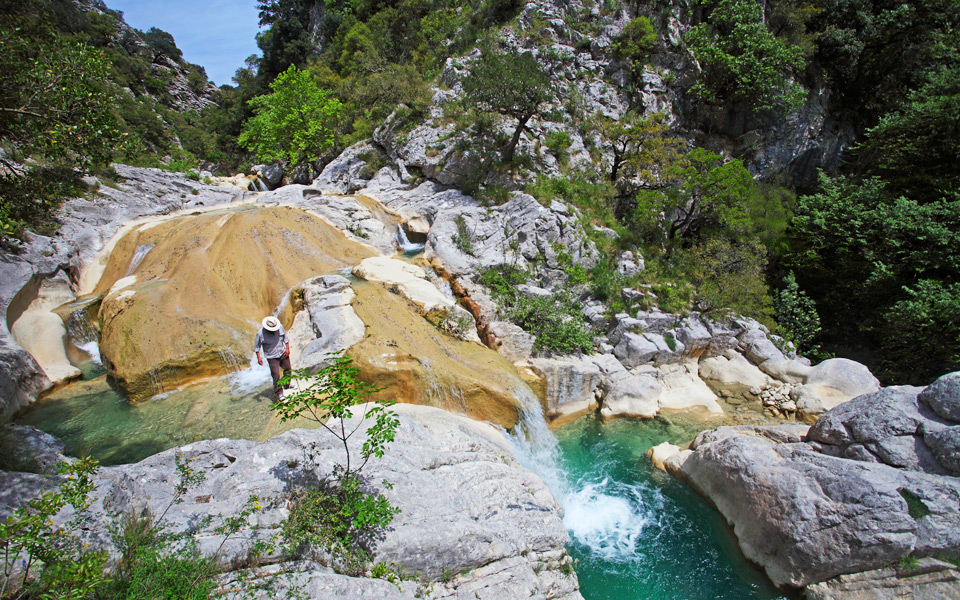
In the bed of the Dafni River, Vothnes pools are formed and provide truly stunning scenery for a hike
© Olga Charami
(50k | 1h15m from Syvota)
A dramatic gorge, large river pools with crystal-clear water, a succession of waterfalls, streams flowing everywhere, lush vegetation. In the bed of the Dafni River, Vothnes pools are formed and provide truly stunning scenery for a hike. The deeper you proceed into the gorge, the more delightful it becomes. To enter the gorge, you need to walk for about an hour along the Laggaris, a beautiful stone path that starts just before the village of Kokkinolithari. Built during the Ottoman occupation, this path was used by the nomadic mountain communities of Epirus, as well as for the transport of the famed salt of Sagiada across to Ioannina.
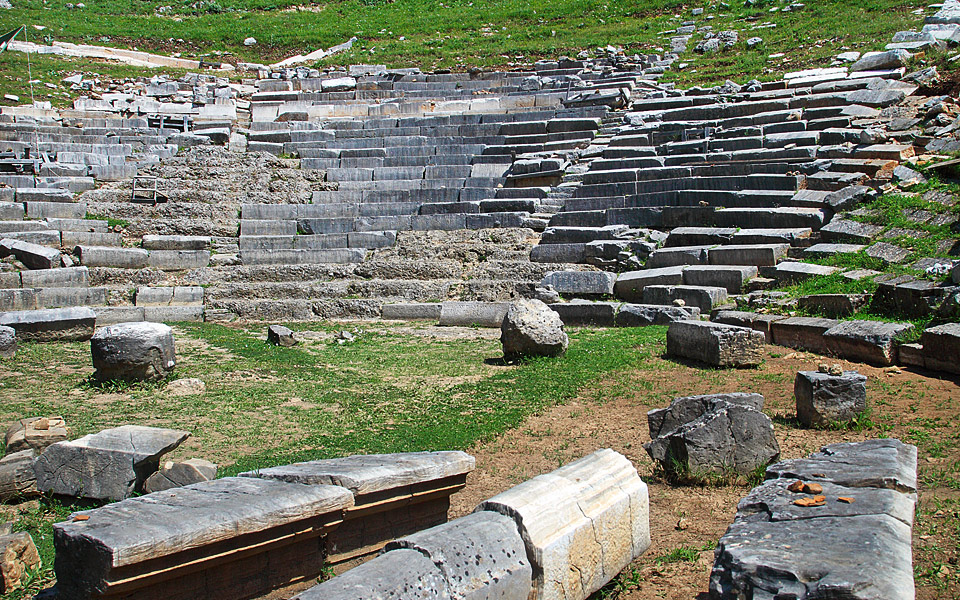
The stone theater of Gitana is rare even for Greece's standards
© Olga Charami
(40k | 1 hour from Syvota)
Socrates, Armodika, Nikomachos, Alexandros, Nikophon: these are some of the names inscribed on the stone seats at the ancient theater of Gitana (or Gitanae). This theater, rare even by Greek standards, was built of limestone in the mid-3rd c. BC and had a seating capacity of 4,000. The theater belonged to the once powerful ancient city of Gitana, the second capital of the Koinon (or ‘League’) of the Thesprotians from its founding in 330 BC until its conquest by the Romans in 167 BC. The city occupied a commanding position next to the Kalamas river. The Kalamas was a navigable river at the time, so it afforded access to the sea while serving as a natural defensive barrier for the city.
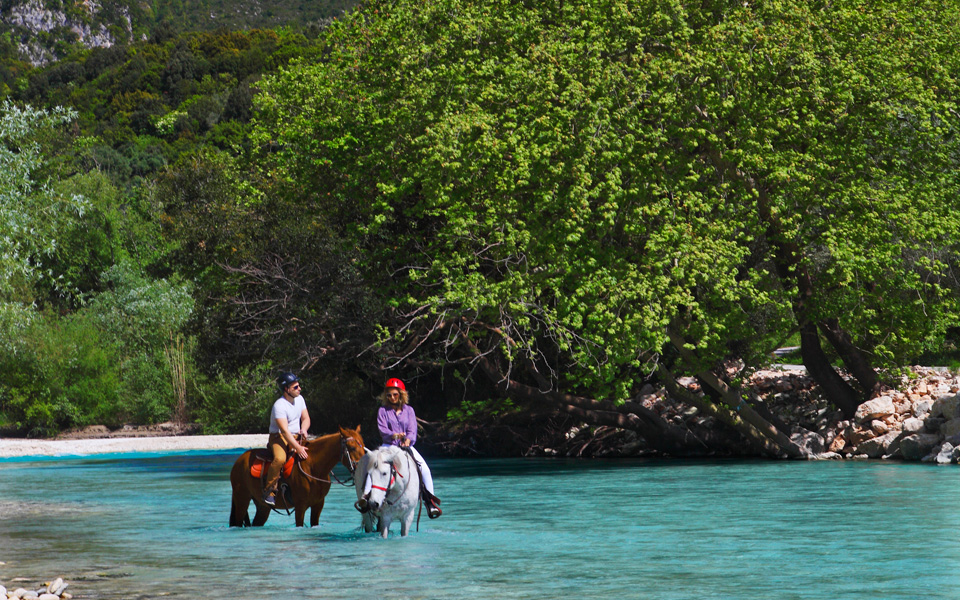
In ancient times, the river Acheron was the gateway to the underworld
© Olga Charami
(52k | 1h10m from Syvota)
In ancient times, Acheron was the river across which the souls of the dead were ferried to the Underworld. Today, at its mouth in the village of Ammoudia, modern-day “ferrymen” are on hand to re-enact these fateful crossings. Twelve kilometers to the east, the village of Glyki is the perfect base for discovering the “river of woe”. This is where the path through the Acheron Gorge begins; the walk takes 5-6 hours, but there are shorter ones, too. This is also where several rafting companies operate offering varying levels of difficulty, as well as horse riding. In summer, the area is full of tents, RVs, food trucks and hundreds of people, proving just how lively the gateway to Hades really is.
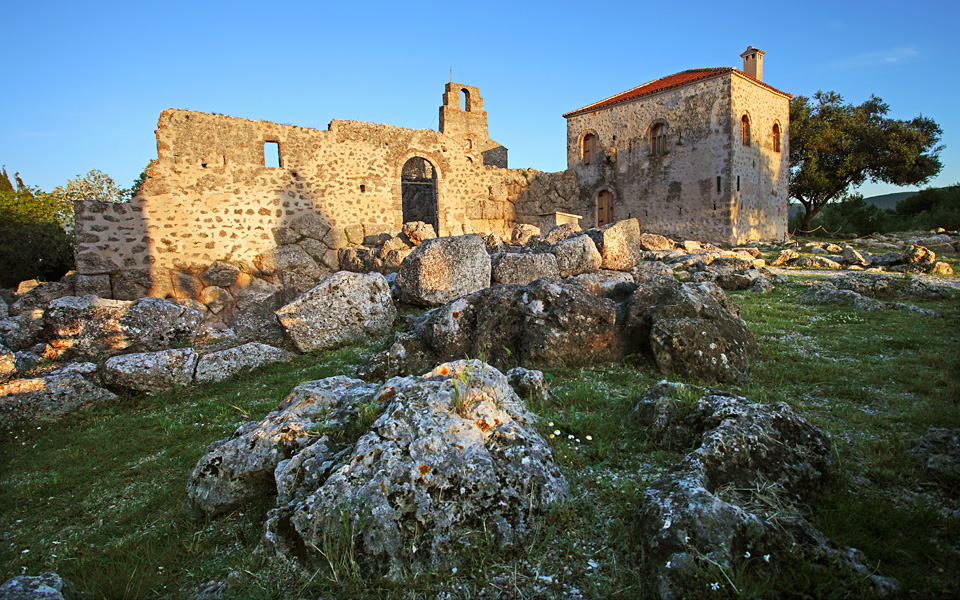
The Necromanteion (“Oracle of the Dead”), where the underground hall is rumoured to play havoc with the senses
© Olga Charami
(50k | 1 hour from Syvota)
They say that if you spend enough time in the underground hall of the Necromanteion (“Oracle of the Dead”) of the Acheron river, you’ll feel dizzy and your hearing will become impaired. No one knows if this is due to a lack of oxygen, the acoustics or something supernatural, but the guides at the archaeological site of the Necromanteio will be happy to tell you what they know. The sanctuary is thought to have been constructed in the late 4th or early 3rd c. BC, although the site was first inhabited much earlier. In the early 18th c., the Monastery of Aghios Ioannis Prodromos was built over the ruins. The Necromanteion is a fascinating structure, its most striking feature being the underground chamber carved out of rock, with 15 stone arches supporting the roof. It is believed it was here that visitors were brought to commune with the souls of the dead.
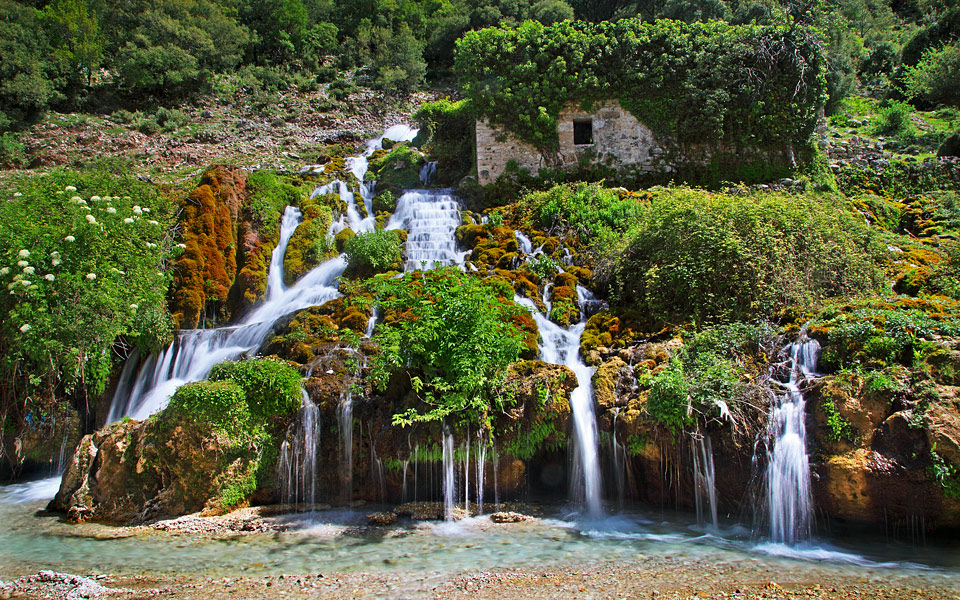
The historical site of Souli carries a sad tale from the Greek liberation but is today the site of happier visits
© Olga Charami
(68k| 1h30m from Syvota)
Rugged mountains that look like natural fortresses, arid and strewn with boulders. This is the location of a historical site known as Souli, famous for its role in the Greek liberation. It is particularly known for its valiant women, 22 of whom jumped to their death from the Rock of Zalongo in December 1803 to avoid enemy capture.
Today, there are happier things to see in this small farming village, including the stone houses of the local resistance leaders’ families. Sit at one of the two coffee shops to learn about the history of the place or, if you’re in the mood for a walk, make your way from here to Kougi. There, you will see the Church of Aghia Paraskevi and its amazing view. Across the way lies the fortress of Kiafa. Complete your excursion at Myloi Souliou. The fork in the road, leads to a ravine with running water, a restored watermill and a charming café right next to the river.
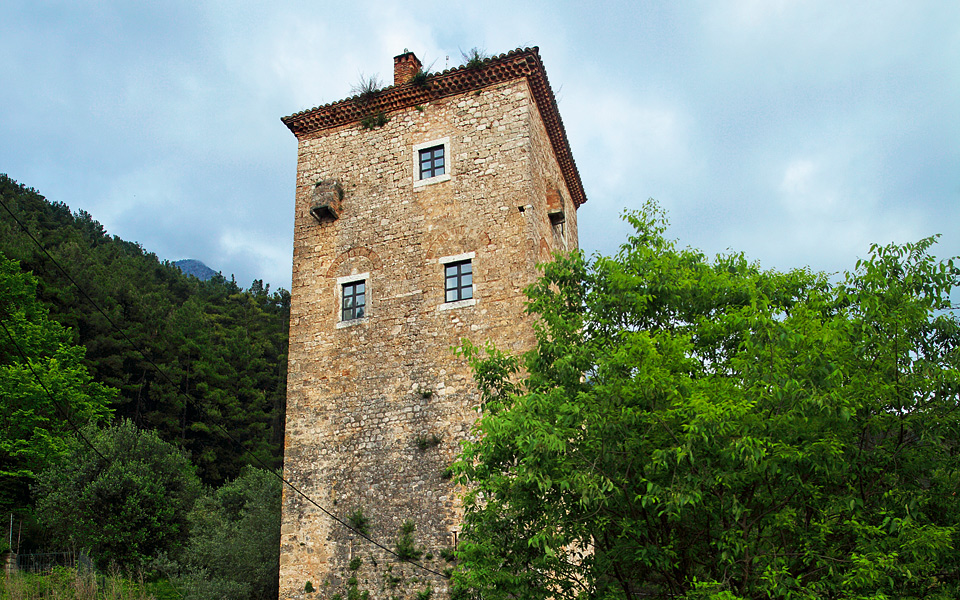
The Koulia tower, as it is called, was built in the late 18th to early 19th c. and stands 26m tall
© Olga Charami
(45k | 1 hour from Syvota)
Paramythia was one of the largest commercial and financial centers of Epirus. Nowadays, the Saturday street market may not be as grand and diverse but, along with the historic Lambovo Commercial Festival in October, it is still an important local tradition. Don’t miss the splendid tower at the top of the village. The Koulia, as it is called, was built in the late 18th to early 19th c. Standing 26m in height, the five-story tower has arrow slits for archers and holes through which boiling oil was poured on attackers. The Koulia is an outstanding example of a fortified tower house, among the finest still standing in northwest Greece. Thanks to restoration work, it is now also possible to tour the interior, which houses a permanent photographic exhibition of the monuments of Thesprotia from Byzantine times to the late period of Ottoman rule.
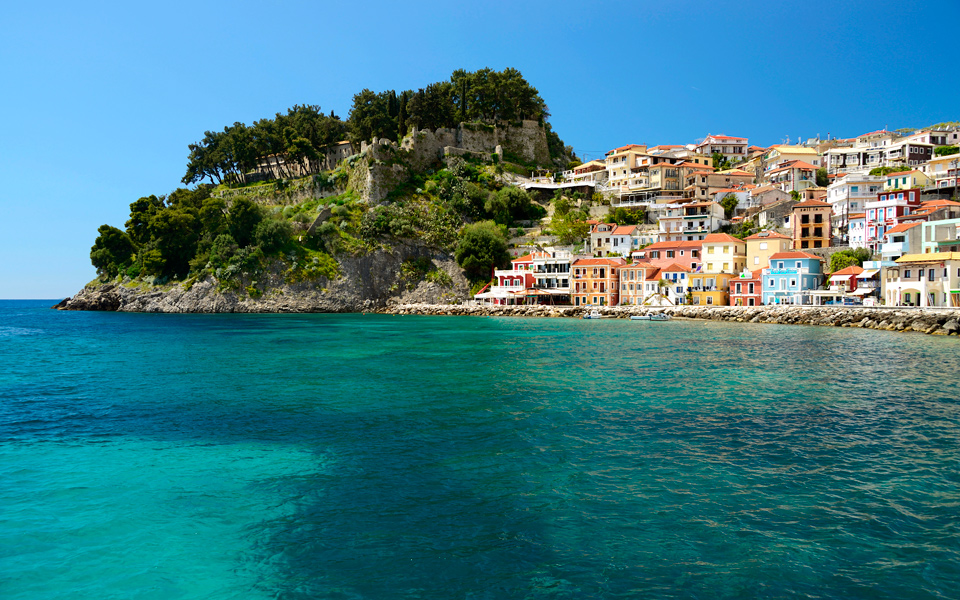
Parga is known for the beauty of its brightly colored houses
© Shutterstock
(27k| 50 minutes from Syvota)
A true gem of the region, Parga has always been targeted by invaders. This is true even today, although the “conquerors,” sunbathers, swimmers and beachcombers, have more benign intentions. Here, visitors can enjoy the clear waters of its stunning beaches (Kryoneri, Piso Kryoneri, Valtos) and the picture-postcard beauty of its brightly colored houses laid out amphitheatrically, or they can indulge in leisurely walks through its narrow alleyways and down the lively promenade lined with ouzo bars and coffee shops. No one should miss a visit to the splendid Venetian castle at the top of the hill overlooking the town, where you can enjoy a drink at the café while taking in the incredible view.
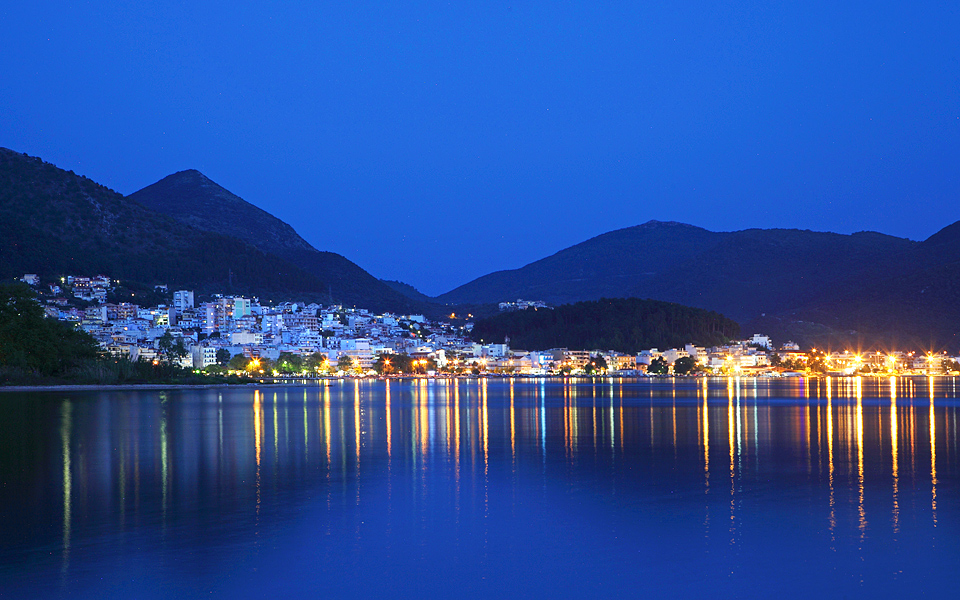
The little gem of Igoumenitsa is definitely worth a visit
© Olga Charami
(24k | 35 minutes from Syvota)
Igoumenitsa, which was declared the capital of Thesprotia in 1938 may be a relatively new town, but it is definitely worth a visit. Here, visitors can sip coffee in one of its numerous squares, take a stroll along its walk-cycle path next to the sea, climb up to the small castle on the lush green hill, or go swimming at nearby Drepano. Other options include a visit to the Museum of Culture and Tradition “The House of Rena” with its fine examples of traditional dress, embroidery and 2,000 other artifacts. The Archaeological Museum of Igoumenitsa is also not to be missed. It features exhibits that shed light on the customs and everyday life of the ancient Thesprotians. Finish the day by finding a spot to admire the amazing sunset.
Join expert guides and trained truffle...
The goddess Artemis, the Virgin Mary,...
Discover festivals, beaches, food, and hidden...
Ten must-do experiences in Athens, from...